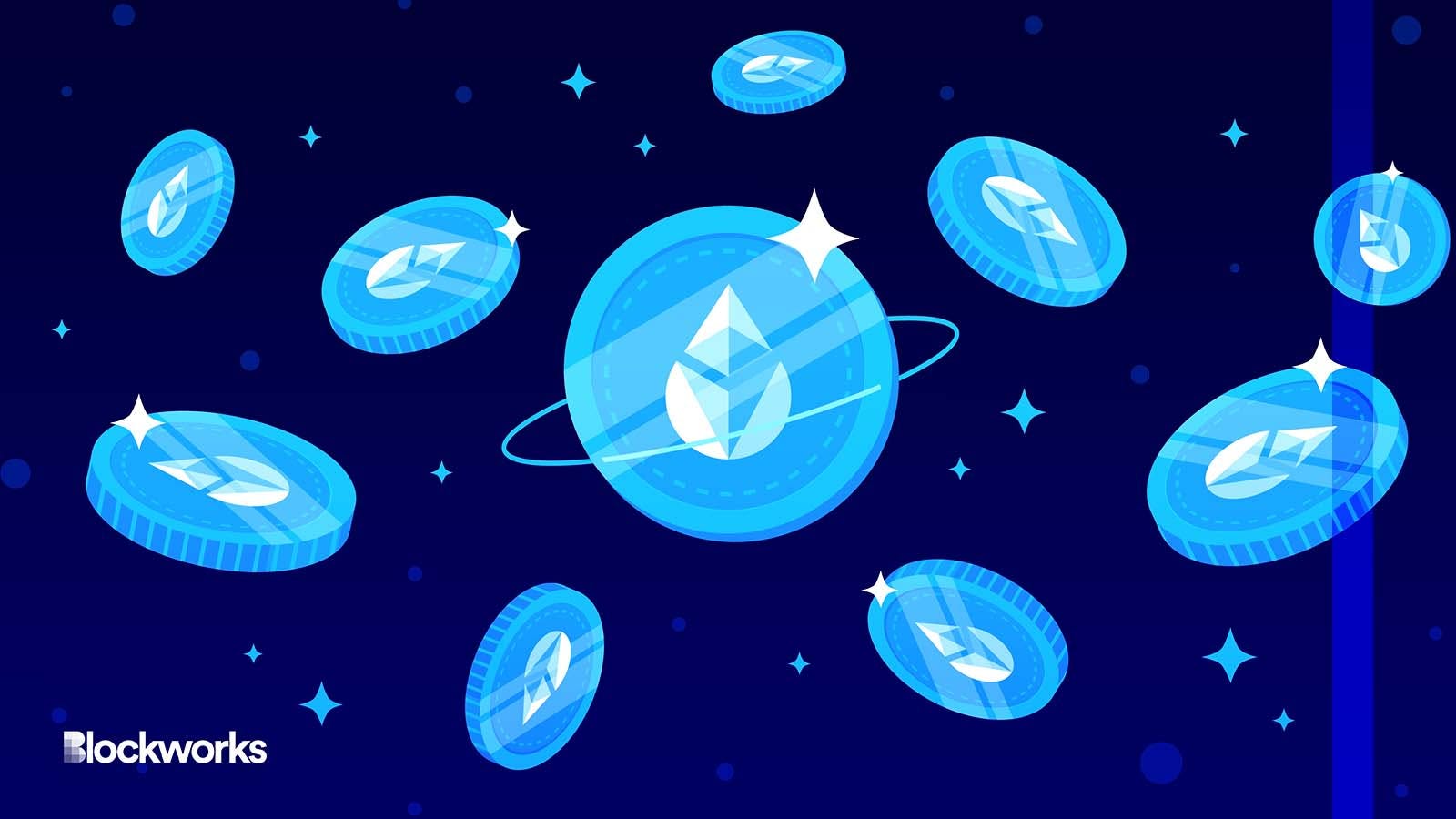Lido Moves Ahead With V2 Upgrade as Shanghai Edges Closer
The upgrade focuses on a new staking router and withdrawals

WindAwake/Shutterstock.com modified by Blockworks
Ethereum liquid staking solution Lido revealed its latest upgrade, V2, which will focus on a new staking router that will allow anyone to develop on-ramps for new node operators. Staked ether holders will also be able to withdraw from Lido at a 1:1 ratio.
Lido was designed to combat centralized staking platforms and simplify the process of running individual staking nodes — its staked ether (stETH) was the first liquid staking derivative to be adopted by the mainstream and continues to be one of the most popular staking protocols.
Around 5.05 million ETH is currently staked with Lido. Staked ether cannot be withdrawn from the Beacon chain until the Shanghai hard fork, which is anticipated to be executed in April.
Lido believes the implementation of its V2 upgrades will significantly improve the decentralization of its network and improve withdrawal processes ahead of Shanghai, making stETH a valuable asset on the Ethereum network.
Staking router
The staking router is one of the major protocol upgrades on Lido.
Lido currently uses a singular NodeOperatorsRegistery — where a DAO selects node operators and incorporates them into a smart contract.
This update will upgrade the operator registry at Lido by moving it into an extensible protocol through a modular infrastructure — architecturally shifting Lido toward an aggregator strategy to incorporate a more diverse validator set.
Anyone will have the ability to create “plugins” in the form of modules that would attach to the staking router, Isidoros Passadis, the master of validators, and a protocol developer at Lido who goes by Kadmil, told Blockworks.
“This means that a variety of different types of validator pools could be more easily accessed by the Lido protocol, including ones that solo and community stakers have a large participation in, which would not only drastically increase the total number of node operators who participate in the Lido protocol but also the diversity of the validator setups,” Passadis said.
The staking router is designed to become the nucleus of the Lido platform — the center of collaboration for stakers, developers and node operators.
Each module in the staking router would consist of various node operators, including community stakers, professional organizations, and DAOs, just to name a few. These node operators will also be given more than one module to participate in — diversifying the operator base.
Aside from this, the new staking router will also enable users to store keys on an layer-2 solution or off-chain.
This is because “managing node operators and validators on-chain require transactions which scale with the number of operators — either in quantity or size, i.e. how much data is being recorded per transaction — being able to leverage [layer-2s] would drastically reduce the cost basis of node operator and validator management,” Passadis said.
Withdrawals
Withdrawals will be another important feature of Lido’s V2 upgrade. This feature will allow Lido users to unstake their stETH and receive ETH at a 1:1 ratio for ether.
The Ethereum network is designed differently from other proof-of-stake networks, which have fixed withdrawal periods for stakers, Blockworks Research analyst Westie noted in a tweet.
On Ethereum, validators must exit through two different stages — join a queue and then begin the withdrawal period. For this reason, Lido will process withdrawals in three separate steps: request, fulfillment and claim.
In the “request” part of the process, users will lock their stETH and propose a withdrawal request. Once the protocol sources the ether to fulfill the request, the process will move to the second stage, “fulfillment.” In this second stage, the protocol will lock the ether and burn the stETH and then notify the user that their ETH is ready to be claimed.
Users can “claim” their ether at any time — although fulfillment time is currently uncertain, Lido predicts the best-case scenario for claiming will be roughly around a few hours — with the majority of requests being ready for “claim” in under a week.
To prepare for all types of events, Lido has also designed withdrawals to be possible in two different modes.
The first mode, and the default mode, is named “Turbo.” This will be a fast way of fulfilling withdrawals and is designed to automate the process around the validator and minimize delays.
The second mode is dubbed “Bunker” and will be used to process withdrawals under catastrophic circumstances. This will prevent any nefarious actors from taking advantage of stakers.
Bunker mode prevents sophisticated stakers from avoiding the penalties by passing the losses to unsophisticated ones, Kadmil told Blockworks.
“Under current conditions and the proposed design, to switch to the bunker mode Lido should experience simultaneous slashing of 600+ Lido validators,” Kadmil said. “That’s 6 times more simultaneous slashings than Ethereum has experienced, and no Lido validator has been slashed ever.”
Launch details
Security audits for Lido V2 will begin at the start of February, with signal snapshot votes on the upgrade planned for the end of this month. If V2 updates are approved, the first version of the testament will be deployed on Ethereum’s Goerli testnet at the start of March.
“We’re excited to share the plan for Lido V2,” Kadmil said. “This Lido on Ethereum protocol upgrade makes the protocol feature complete by allowing stETH to ether withdrawals, and opens a path for more experiments and collaboration with Staking Router architecture.”
Updated Feb. 7, 2023 at 9:49 am ET: Added comments from Isidoros Passadis, the master of validators, and a protocol developer at Lido who goes by Kadmil.
Get the news in your inbox. Explore Blockworks newsletters:
- The Breakdown: Decoding crypto and the markets. Daily.
- 0xResearch: Alpha in your inbox. Think like an analyst.






